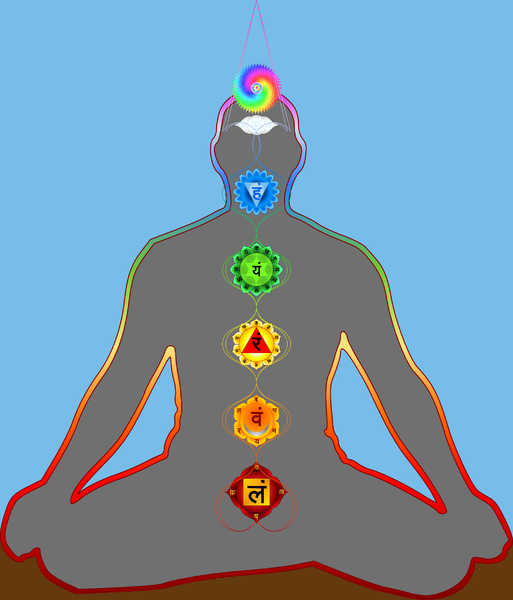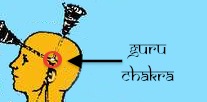Gurus, Magickal Orders, and Cults
Many years ago, before the debacle that brought down the guru known as Osho, a friend of mine was a follower of him. She went to his ashram in Pune, India, to experience him directly. Known then as Rajneesh (or more fully, Bhagwan Shree Rajneesh), he had numerous allergies. Before she was allowed to see him she had to go past people who would sniff her to make sure she wasn’t wearing any perfumes, scented oils, etc. When she finally met him he told her, “You don’t need me any more.” She returned to America and from that time rarely attended any of his groups, although she still practiced what he had taught.
 Bhagwan Shree Rajneesh (Osho)
Bhagwan Shree Rajneesh (Osho)
Many Westerners don’t like the very concept of gurus with their supposed spiritual superiority. We have a social belief that superiority in any field needs to be earned by hard work or birthright. Indian gurus, though, just seemed to pop up out of nowhere proclaiming their spirituality. Who was this Osho? In the West, people would look at this story and say, “If he’s so enlightened, why can’t he cure his own allergies?” Later, when Osho assembled a collection of nearly 100 Rolls Royces and his followers tried taking over a town, many Westerners looked at him and wondered why he needed all of those material things. Shouldn’t he just live in poverty like Gandhi, the Buddha, or even Jesus? Shouldn’t he give his money to the poor?
But because the term “guru” has been used in so much in the East, some Westerners have wanted to use the term. To avoid the dislike for the original concept, the meaning of “guru” for most Westerners has evolved away from its original sense. Now, in the West, for most people a guru is just a teacher. Alternatively, sometimes a Western guru is merely an expert in a particular field. Thus, someone who knows a lot about Facebook is a “Facebook guru.” I guess if you can’t accept something it’s easier to define it out of existence.
The Truth About the Guru
The term guru is composed of two Sanskrit terms, gu —meaning “darkness”—and ru—meaning “remover.” The superficial meaning is that darkness refers to ignorance, so a guru is person who removes ignorance—a teacher. Since, in India (home of Sanskrit), gurus are usually associated with spirituality, the implication is of a spiritual teacher.
The initiated concept of a guru, however, is that the “darkness” that is dispelled is the darkness of being separated from the Divine. A true guru is more than just a teacher. For followers, he or she is a direct link to the Divine, virtually God on Earth. Indeed, the term Bhagwan means the Supreme Being or Absolute Truth; a personal God.
The key to really understand the concept, however, goes even deeper. To understand it you have to look at a concept of mantras. As readers probably know, a mantra is a sound, word, or phrase often repeated in prayers. Some are popular and well known, perfect for anyone to say. But there are certain mantras you should say only if the mantra was given to you by a guru. One book I read stated that using such a mantra as a result of reading it or overhearing it was “tantamount to brahmanicide” (equal to killing a priest). This is because that particular mantra may not be appropriate for you and using it might actually delay your spiritual evolution. So there are special mantras given by God to your guru to give to you.
The guru literally functions as God on earth. He or she meets a student and theoretically instantly knows what the student needs to spiritually advance, including any mantras. But how does the guru have a direct line to God to learn those mantras?
The Secret Chakras
The Seven Major Chakras
Most readers are familiar with the seven major chakras. Actually, there are hundreds of chakras around the body. If you draw a line directly back from the brow or third-eye chakra, and straight down from the crown chakra, the lines meet in the center of the head. At this point there are two chakras.
The first is called the Vhirkuti Chakra. It opens as your spiritual understanding begins to unfold.
The second is called the Trikuti Chakra. It opens when your spiritual understanding has unfolded.
Together, they are known as the Guru Chakra, your direct link to the Divine. When the Guru Chakra opens you have direct access to God/dess. With this chakra open, a person can obtain mantras directly from the Godhead.
So the purpose of a true physical guru—a person—
is to function as a student’s direct link to the Divine
until the student can be trained toactivate his or her own Guru Chakra
and contact the Divine directly.
I don’t know if Osho was a true guru throughout his career and with everyone, but for my friend, at the time she met him, he functioned in the rule of a true guru.
Magickal Orders
In the West, magickal orders or groups often have the function of the guru. Traditionally, the goal of magickal orders has been to help a student achieve direct contact with the Divine. They function as gurus. This direct contact has a variety of names, such as “Knowledge and Conversation of Your Holy Guardian Angel” or “Enlightenment.” In the East, as you do the work to achieve this level you may develop Siddhis or magickal power. Similarly, in the West, you develop the ability to do magick.
If magick were simply reading words from a book, every book on magick in the U.S. would be locked up under the Patriot Act. Magick involves the ability to raise or generate energy and manipulate it. Spells and rituals just point to ways to manipulate the energy to achieve a goal. Similarly, a football playbook may show where people should move and where the quarterback should throw the ball. But if the linemen don’t know how to raise enough energy and manipulate it to block out the other team, and if the quarterback doesn’t have the strength or ability to throw the ball accurately, the playbook is just theory. A person who reads rituals without being able to work with energy is just reading and waving wands. Learning the use of magickal energy—such as is explained in my Modern Magick—is part of the magickal path to the Divine.
Cults
Unfortunately, there are some groups that pretend to be spiritual but actually attempt to prevent you from establishing your personal link to the Divine. They do this so the leader or leaders can have power over the followers. The general term for such a group today is a cult.
Traditionally, the term cult simply meant a “a system of veneration of a figure or object.” Often it referred to a small group involved in such veneration. Thus, when Christianity was just a small Jewish sect, it could have been defined, classically, as a cult. [Thanks to Brandi Palechek for correcting me on my earlier version of this!]
Today, however, the term “cult” is definitely a pejorative, clearly showing that the group is negative for individual followers and possibly dangerous.
It would be great if we could simply draw a line and say, “Group X is a cult. Group Y isn’t a cult.” Unfortunately, it’s not that easy. In between a positive group and a negative cult is an enormous gray area. One way to determine the likelihood of any particular group being a cult is through the use of Isaac Bonewits’ Cult Danger Evaluation Frame. Isaac was one of the most important leaders of Paganism and Druidism for almost four decades, and his death last year was a great loss to the community. His Evaluation Frame allows anyone belonging to, or thinking of joining a group, to determine just how cultic the group may be. Here are some things that could indicate a cult rather than a true magickal order:
- Does the leader have control over what members may think and do?
- Does the leader claim to have knowledge others do not have? [Sometimes this is described as exclusive spiritual knowledge direct from “higher sources” or from God]
- Is the group inflexible with its beliefs/dogma?
- Does the group focus on how many members they have and on recruiting new members?
- Does the group have several fronts or run numerous groups?
- Is there control of members’ sexual practices?
- Does the group demand members not read certain materials?
- Does the leader or group exhibit paranoia over supposed enemies and come up with wild conspiracies?
These are just a few of the indicators of a negative cult. Are you in such a group?












I enjoyed this article. Thank you, DMK.
Ironic thing is, I’ve seen folks who took an FSS weekend workshop make spirit contact after about a day of training. So much for “exclusive” links to the divine…
Yes, I was raised in just such a cult by my family. It was called Fundamentalist Christianity.
Fortunately, I grew up and got away.
Now, I practice a much saner religion, neo-paganism.
Very good post, good information. Thank You!Ne
Good article. After having been involved loosely with an ashram in Northern California, I can add another feature to watch for in cults. Is there a heirarchy of disciples that systematically prevent physical access to the guru? This is a critical point as a guru/disciple relationship is supposed to be a highly personal one, not an “astral meeting place only” and not strictly limited to any publications that the Guru may be hawking or the darshan line (a lineup to get a “viewing” of the guru and a wham-bam-thank-you-ma’am blessing).
[…] Gurus, Magickal Orders, and Cults […]